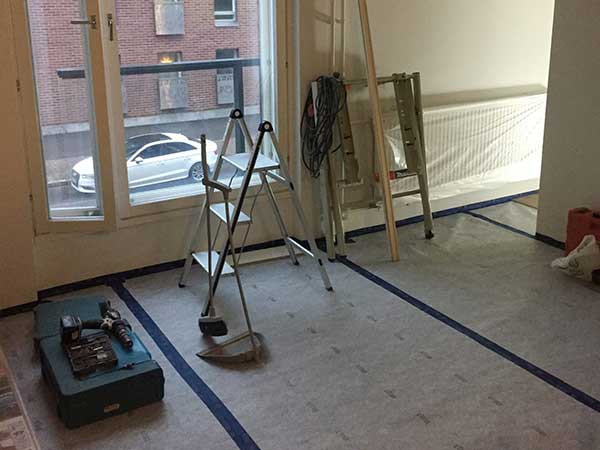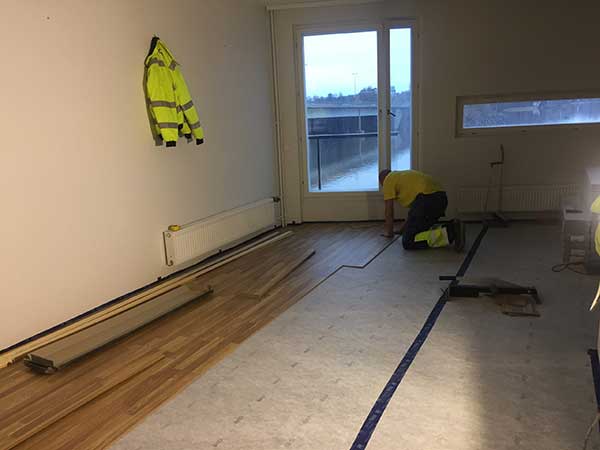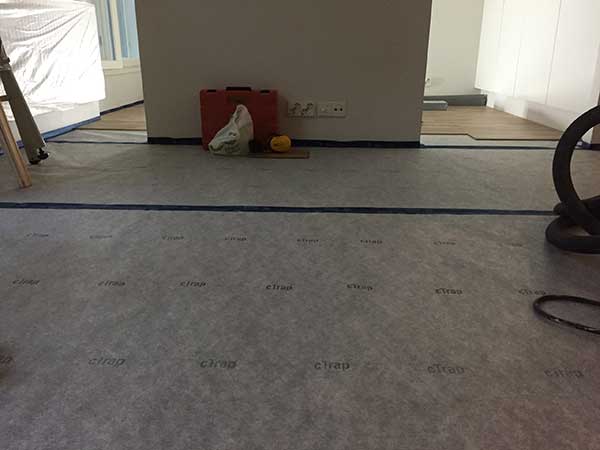


Problem
In this newly built property moisture remained in the construction when the surface layer was installed.
A strong musty odor was noted in the apartments with high air concentrations of known moisture-caused emissions, mainly 2-ethylhexanol (2-EH), were found.
Measure
The existing surface layers were removed, the cTrap cloth was rolled out on the floor, and new surface layers were laid (2-EH is a hydrolysis product of some adhesives and phthalates).
“Before the renovation, the surface emission rate varied between 55 – 64 μg/m2h for 2-EH and between 65 – 130 μg/m2h for C9-C10 alcohols. After renovation, these compounds could no longer be determined (the emission rate was below the detection limit of 1 μg/m2h)”
(Directional measurements with FLEC; Pitkäranta/Lehtimaa, 12th Nordic Symposium on Building Physics 2020)